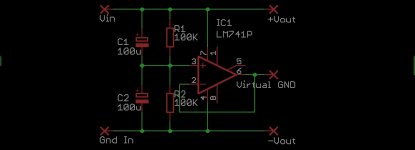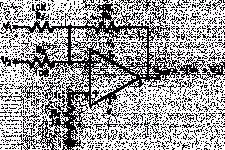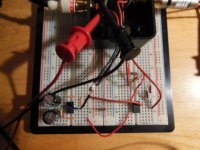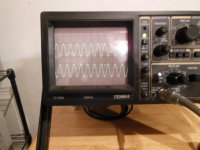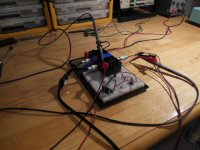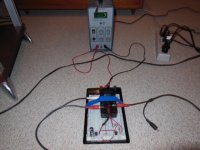I want to try hooking up a subwoofer along with the F5 amp to the outputs of a B1 buffer. The subwoofer has a single input.
I've read a few threads here at diyAudio and other articles on the net.
Some say I can connect the outputs of the B1 with a simple Y cable since it has 1K series resistor on the output. Others say I need a summing amp because just connecting the outputs will cause crosstalk between channels.
Thanks for your help!
I've read a few threads here at diyAudio and other articles on the net.
Some say I can connect the outputs of the B1 with a simple Y cable since it has 1K series resistor on the output. Others say I need a summing amp because just connecting the outputs will cause crosstalk between channels.
Thanks for your help!
Last edited:
Use an inverting "summing" circuit to combine the L & R, for a mono feed to the bass only amplifier/speaker.
Use an inverting "summing" circuit to combine the L & R, for a mono feed to the bass only amplifier/speaker.
I know little about and have never worked with op-amps. Can you please point me in the direction of something more than a schematic.
Mono Summer Module
is a balanced to balanced summer.
Op Amp Summing Amplifier
is an unbalanced to unbalanced. I found the links work with being registered.
Note that the centre section of the balanced is the same as the unbalanced.
is a balanced to balanced summer.
Op Amp Summing Amplifier
is an unbalanced to unbalanced. I found the links work with being registered.
Note that the centre section of the balanced is the same as the unbalanced.
I did this circuit on a breadboard. It's made with two LM 741 op-amps I bought at Radio Shack. This first one develops the positive/negative voltages needed for the second op-amp. The second op-amp is the inverting summer. R1 and R2 are 10K as shown. I experimented with R3 which ended up being 5K, which gives me 1/2 the sum of the voltages V1 and V2. It seems to work great and was fun to build. Now I just need to put it on a circuit board in an enclosure and replace the bench supply with a something permanent.
Thanks AndrewT.
I guess this thread could be moved. It doesn't really have anything to do with Pass Labs anymore.
Thanks AndrewT.
I guess this thread could be moved. It doesn't really have anything to do with Pass Labs anymore.
Attachments
If you set R4 to equal the parallel combination of R1||R2||R3, then the opamp output offset is minimised if the opamp is perfect.
For R3=5K and R1=R2=10k then R4 should be ~2k5 for minimum offset.
You will find that R4 needs slight trimming for least offset because all opamps are not perfect. It could be higher or lower. 2k4 is probably close enough.
For R3=5K and R1=R2=10k then R4 should be ~2k5 for minimum offset.
You will find that R4 needs slight trimming for least offset because all opamps are not perfect. It could be higher or lower. 2k4 is probably close enough.
- Status
- Not open for further replies.
